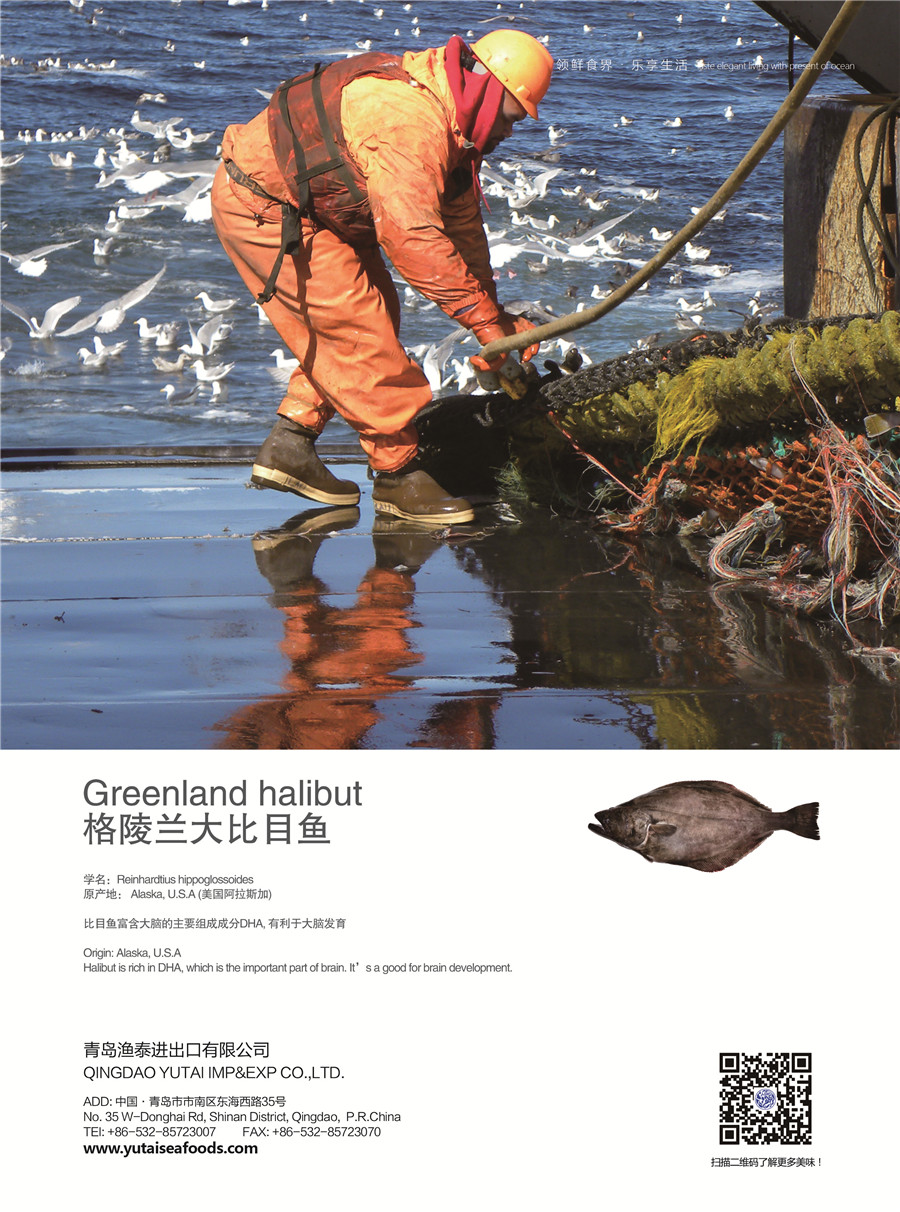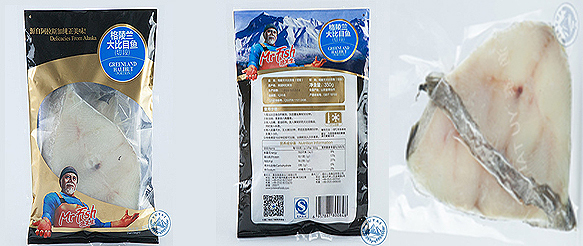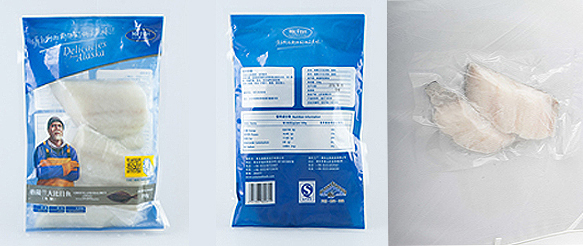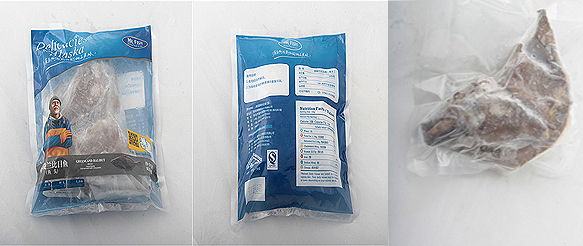The Greenland halibut or Greenland turbot (Reinhardtius hippoglossoides) belongs to the family Pleuronectidae (the right eye flounders), and is the only species of the genus Reinhardtius. It is a deep water fish, ranging between about 200 and 1,600 m (700 and 5,200 ft), and is found in the northern Atlantic and northern Pacific Oceans. It has a variety of other English vernacular names including black halibut, blue halibut, lesser halibut and Newfoundland turbot. The Greenland halibut is a flatfish, and the left eye has migrated during the fish's development so that it is on the right side of the head. However, in this fish, it has not moved as far as in bottom-dwelling flatfish and the fish can probably see forwards. The Greenland halibut can swim in a vertical position and both sides of its body are a speckled brown colour, but the left side is rather paler than the right. This fish is used for human consumption and is caught mostly by trawling. Its morphology with the left eye positioned on the dorsal ridge of the forehead gives it an appearance of a cyclops when looking straight at it. The central position of the left eye in the Greenland halibut probably gives it a much wider range of peripheral vision in comparison to other flatfish where the eye has migrated completely. The body shape is elongated and compressed dorsal-ventrally and muscles on both sides are equally developed. Both sides are pigmented; however the left blind side is slightly lighter in color than the right side. The maximum length is about 120 cm and the maximum weight is about 45 kg, the normal length is 80–100 cm and they usually weigh 11–25 kg. Its physical appearance suggests it to be a vigorous swimmer that can swim in a vertical position. Vertical swimming has been observed during tagging experiments. However, video analyzing of Greenland halibut behavior in front of a bottom trawl showed no sign of swimming in a vertical position. Even though most Greenland halibut are caught in bottom fishing gears (trawl, longline and gillnet) they have also been caught in surface drift nets which indicates that they can have a pelagic occurrence. Stomach analysis has also shown that the diet consists mostly of pelagic or bathypelagic organisms. Even though the Greenland halibut is a flatfish it does at times behave more like a roundfish.
Place of origin :Greenland(格陵兰)
English name: Greenland halibut
Scientific name: Reinhardtius hippoglossoides
Raw material origin: Greenland / North Atlantic Ocean
The Greenland halibut or Greenland turbot (Reinhardtius hippoglossoides) belongs to the family Pleuronectidae (the right eye flounders), and is the only species of the genus Reinhardtius. It is a deep water fish, ranging between about 200 and 1,600 m (700 and 5,200 ft), and is found in the northern Atlantic and northern Pacific Oceans. It has a variety of other English vernacular names including black halibut, blue halibut, lesser halibut and Newfoundland turbot.
The Greenland halibut is a flatfish, and the left eye has migrated during the fish's development so that it is on the right side of the head. However, in this fish, it has not moved as far as in bottom-dwelling flatfish and the fish can probably see forwards. The Greenland halibut can swim in a vertical position and both sides of its body are a speckled brown colour, but the left side is rather paler than the right. This fish is used for human consumption and is caught mostly by trawling.
Its morphology with the left eye positioned on the dorsal ridge of the forehead gives it an appearance of a cyclops when looking straight at it. The central position of the left eye in the Greenland halibut probably gives it a much wider range of peripheral vision in comparison to other flatfish where the eye has migrated completely. The body shape is elongated and compressed dorsal-ventrally and muscles on both sides are equally developed. Both sides are pigmented; however the left blind side is slightly lighter in color than the right side. The maximum length is about 120 cm and the maximum weight is about 45 kg, the normal length is 80–100 cm and they usually weigh 11–25 kg.
Its physical appearance suggests it to be a vigorous swimmer that can swim in a vertical position. Vertical swimming has been observed during tagging experiments. However, video analyzing of Greenland halibut behavior in front of a bottom trawl showed no sign of swimming in a vertical position. Even though most Greenland halibut are caught in bottom fishing gears (trawl, longline and gillnet) they have also been caught in surface drift nets which indicates that they can have a pelagic occurrence. Stomach analysis has also shown that the diet consists mostly of pelagic or bathypelagic organisms. Even though the Greenland halibut is a flatfish it does at times behave more like a roundfish.


Fish segment

Fish fillet

Fish head